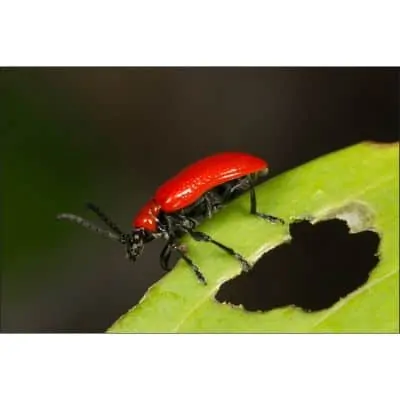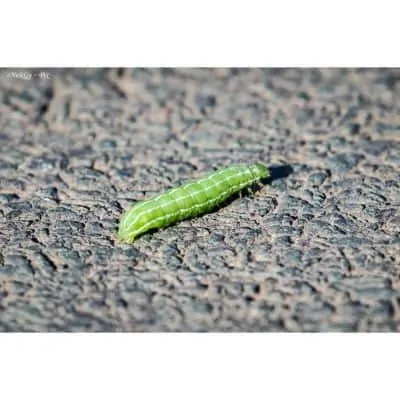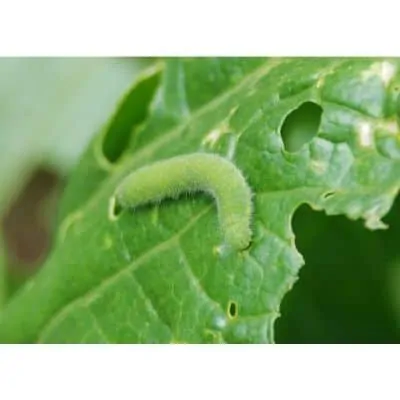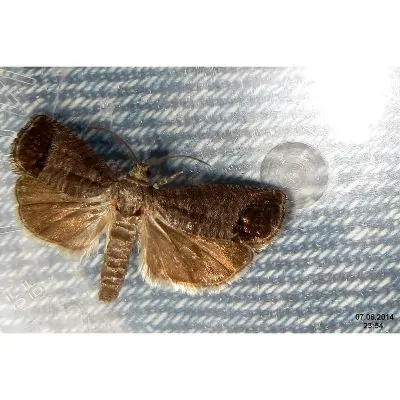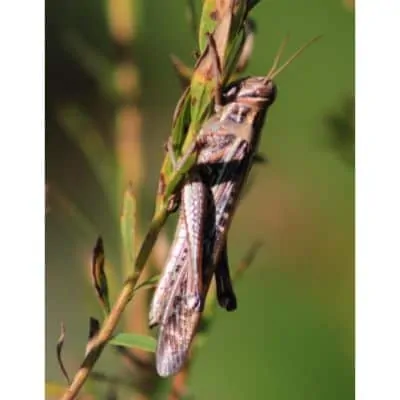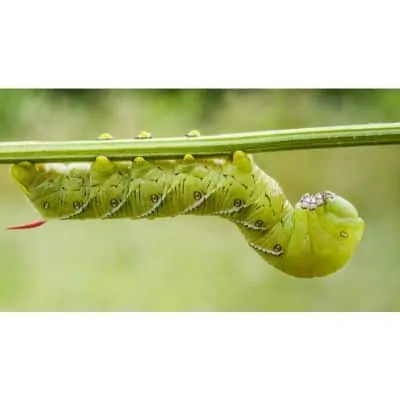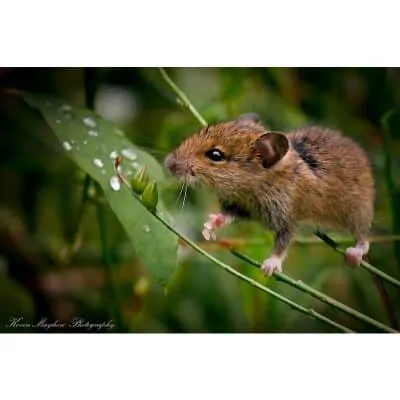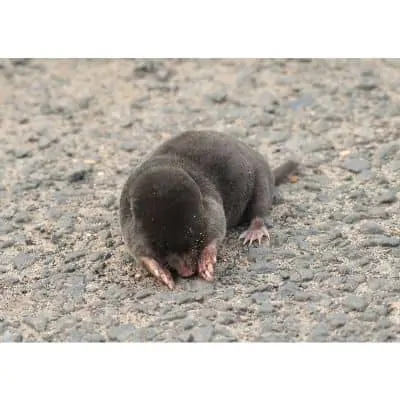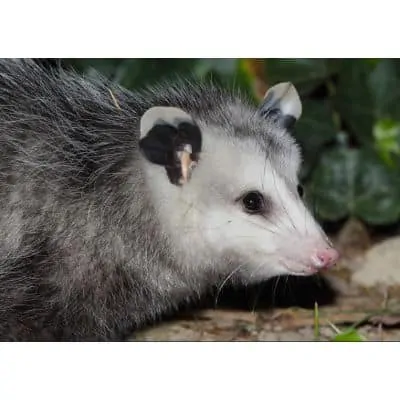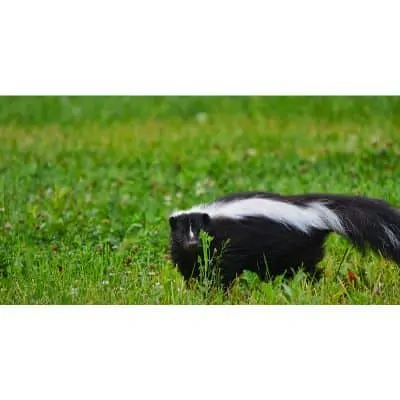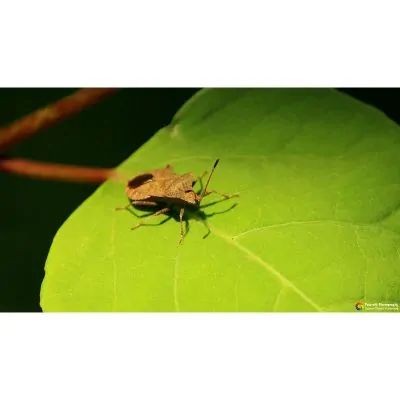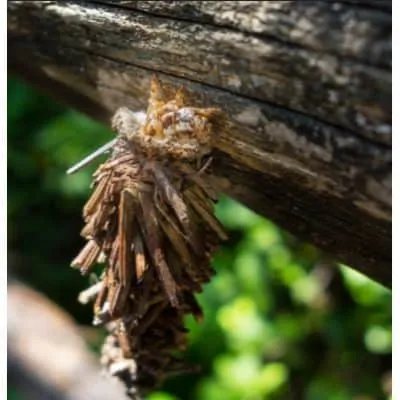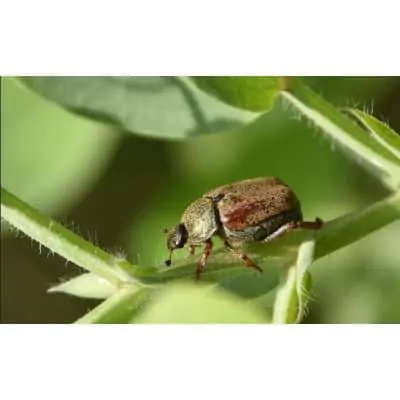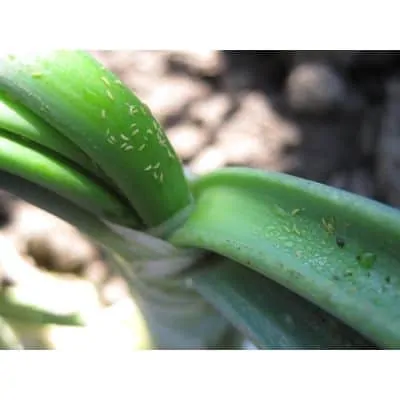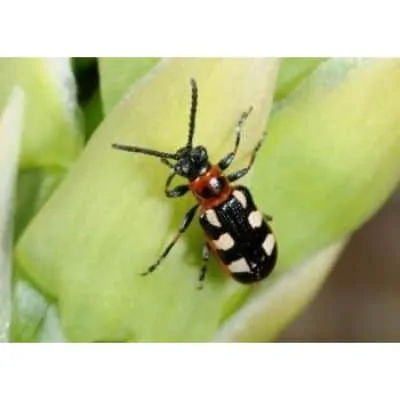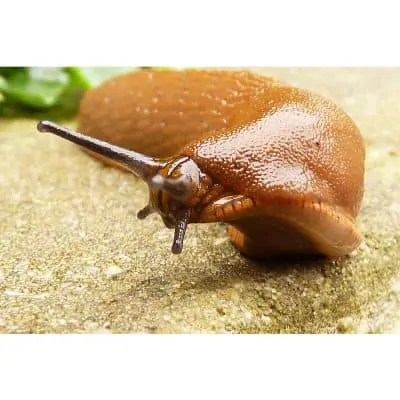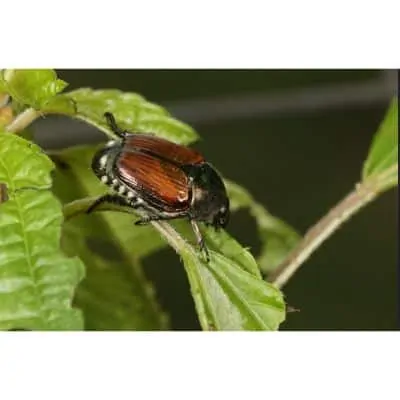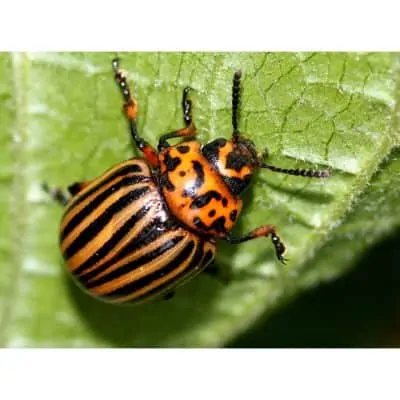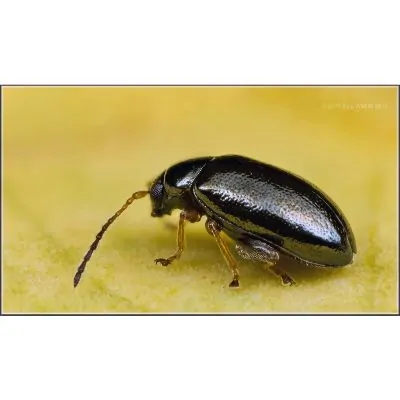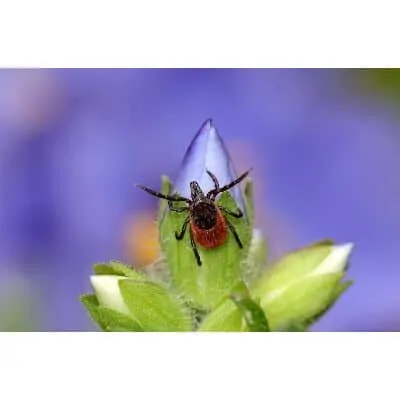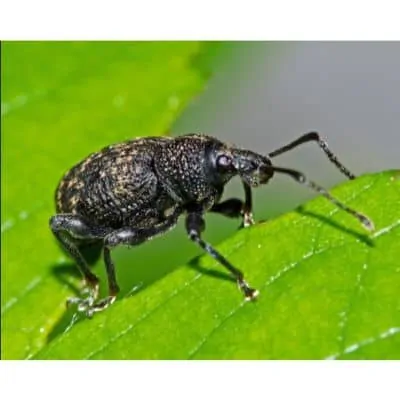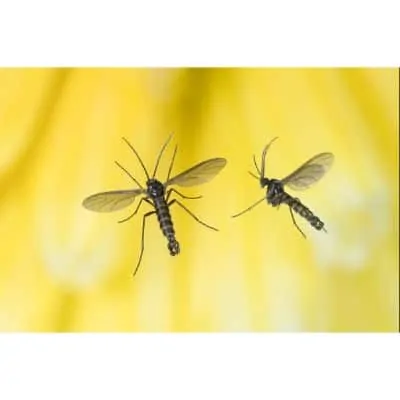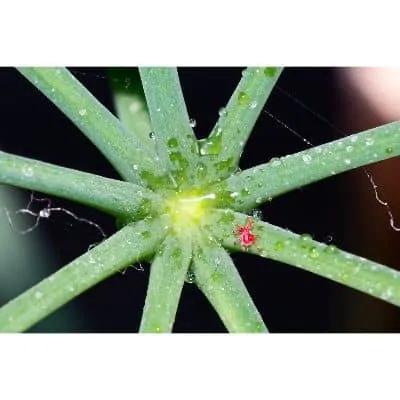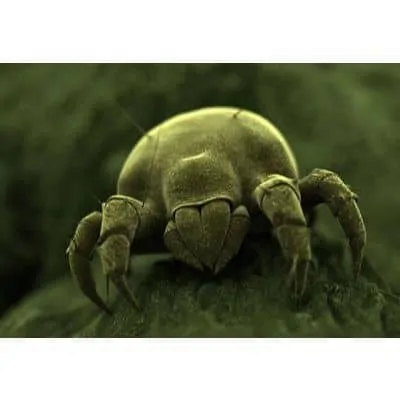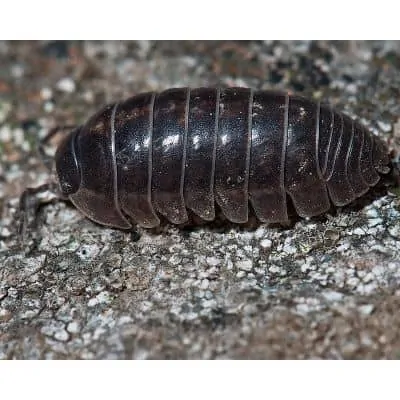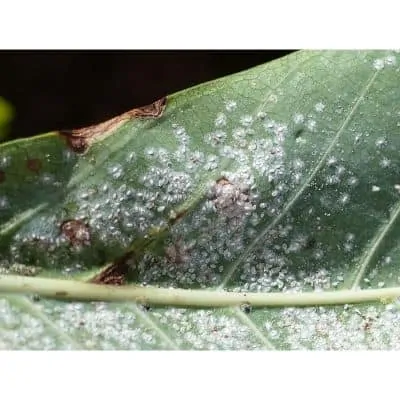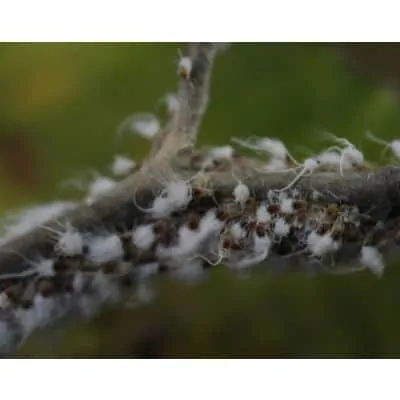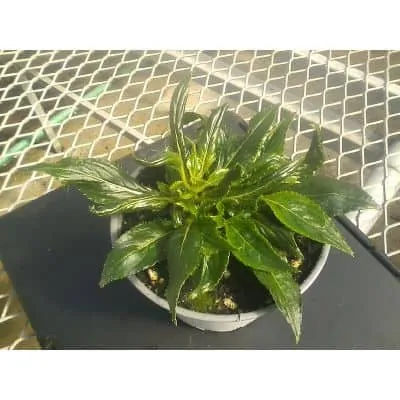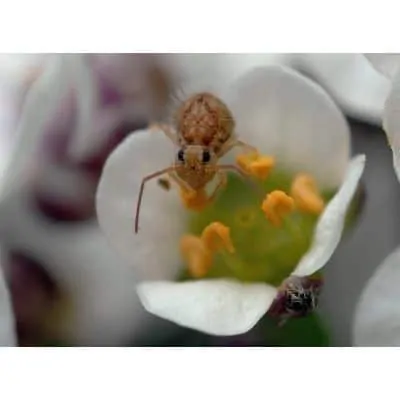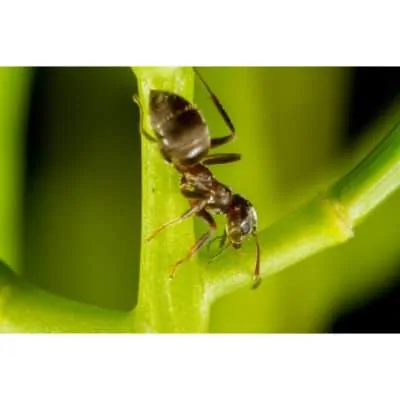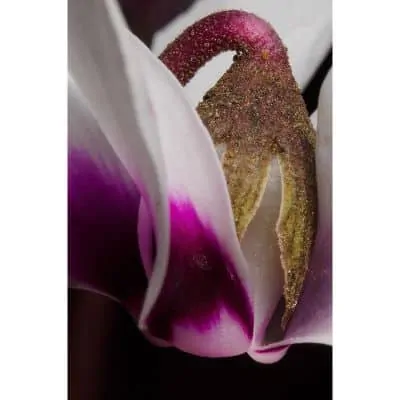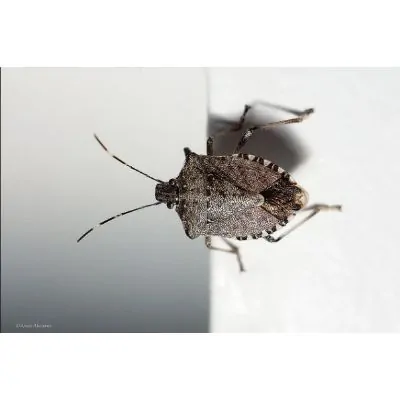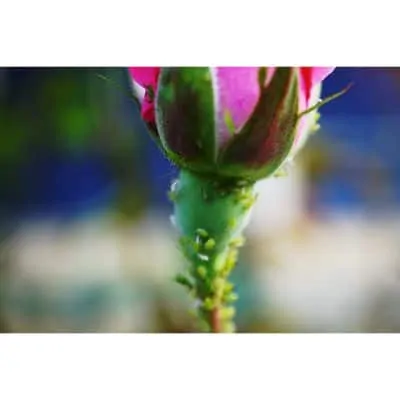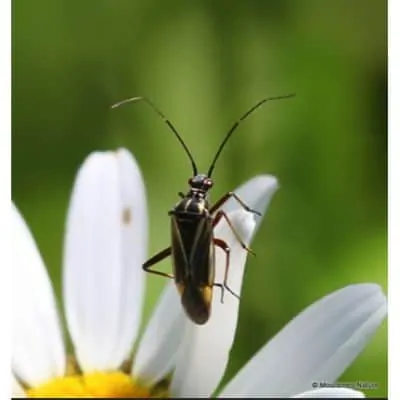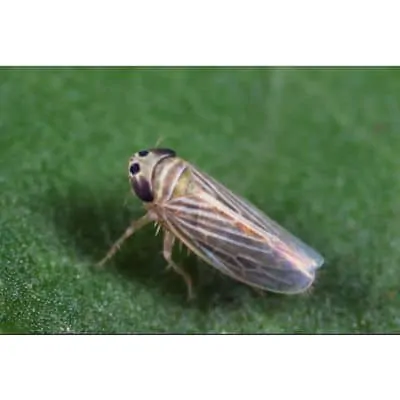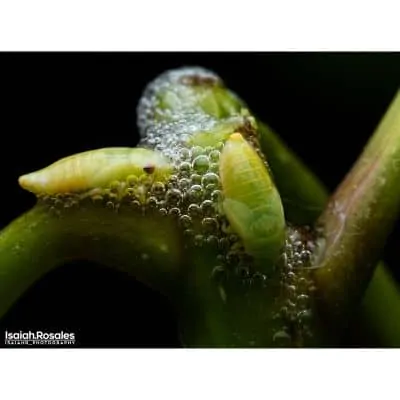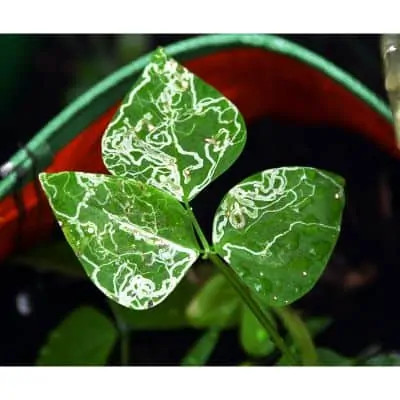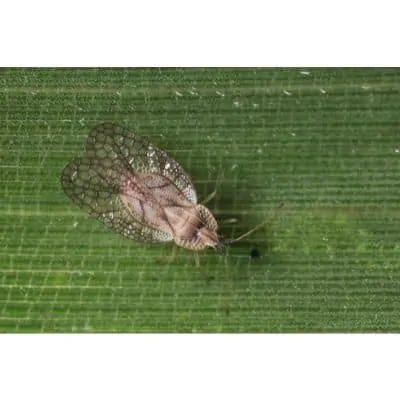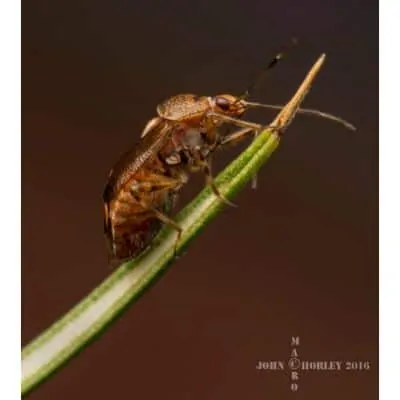40 Common Garden Pests And How To Get Rid Of Them
Have a look at this index with the most common 40 indoor and outdoor garden pests and instructions on how to get rid of them
Whether you are growing your garden indoors or outdoors and no matter what exactly you grow there, sooner or later you will meet a pest or two. Here is a full list of pests you are likely to come across, from cute caterpillars that decimate your cabbages to bugs and rodents. Most of these are found across America, and we have descriptions, how to figure out they are in your garden, and advice on how to get rid of them, all brought together in a handy guide just for you!
1. Cabbage looper
Description: The cabbage looper is the caterpillar phase of a nocturnal moth. It is recognizable by its green color and white stripes, as well as the particular way it moves. To move, this pest coils its body tightly, creating the loop effect that gives it its name.
Signs: The easiest way to tell that you have cabbage loopers is to see the caterpillars crawling around. Eaten leaves can also be a sign, but not a definitive one. If you see brown moths flying around from your garden, expect a few loopers later on.
Damage: They feed on cabbage, as the name suggests, but also on related vegetables such as broccoli and cauliflower, as well as a number of other hosts. They prefer vegetables but will feed on flowers, such as chrysanthemums, and weeds, like dandelions.
How to get rid of these garden pests
The cabbage looper is very adaptable and resistant to most chemical insecticides, save for a few, that are heavily regulated. Your best bet is to let some predators loose, like spiders or ladybugs, and to protect your crops with fine nets.
2. Cabbageworm
Description: Like the cabbage looper, this worm is the larvae of the common white butterfly. The cabbageworm is completely green and looks fuzzy, due to the little hairs that cover its whole body. Its name comes from its preferred food: cabbage and related vegetables, but it also feeds on some flowers.
Signs: The younger worms eat the undersides of the leaves and older ones poke holes in them. The adult version of the cabbageworm, the butterfly, flying around can be a sign that there will be larvae following soon.
Damage: They eat through crops of cabbage and other vegetables, leaving the plants inedible for humans. And while a butterfly might look good, a hundred worms crawling around in your garden do not.
How to get rid of these garden pests
Depending on the size of your garden, you can handpick the cabbage worms off, spray the plants with neem oil and other insecticides, cover the area with a fine net, or plant resistant varieties of the plants. Some plants repel cabbage worms and some gardeners go as far as using false moths as a decoy.
3. Codling Moth
Description: The moth is medium-sized and a dull brown with a few spots on the wings. It flies mostly at night. The body is fuzzy and covered in tiny hairs. The larvae are the same dull brown and more difficult to spot because they are generally inside a fruit.
Signs: Besides the moths flying around your apple tree, a telltale sign of codling moths is the presence of small brown bumps on fruit. Affected apples and pears usually stop growing once attacked.
Damage: The moth itself does little damage, but the larvae feed exclusively on fruit, so they dig into apples and pears, ripen them before their time and stop their growth.
How to get rid of these garden pests
Common insecticides are generally effective against the codling moth. You can try wrapping the tree trunks in cardboard to trick the larvae into digging in that instead of fruit or use sticky traps to catch adult moths before they lay eggs.
4. Grasshoppers
Description: If grasshoppers look to you like they belong to another time, that’s probably because they do. They are one of the oldest surviving insects, dating back to 250 million years ago. They have strong hind legs that help them jump and are generally brownish in color.
Signs: The easiest way to tell that there are grasshoppers around is to listen. Like crickets, they make a particular sound, like a high pitched vibration. However, while crickets are mostly active at night, grasshoppers usually strum during the day.
Damage: Grasshoppers eat anything green, from leaves to stalks. In the right conditions, their biology changes, prompting swarming behavior, which turns a lone grasshopper into a destructive swarm. One of these pests can decimate a small garden, but swarms are known to destroy entire plantations.
How to get rid of these garden pests
The best way to get rid of grasshoppers is not to have them. For that, you need to discourage them by trimming unwanted vegetation on the sides of your garden and, as much as possible, keep spots of shade. They enjoy dry areas so consistently watering your garden is also helpful. Not much can be done against swarms, except covering your garden and hoping they don’t break through.
5. Tomato hornworm
How to get rid of these garden pests
These caterpillars can reach 10 centimeters (4 inches) in length, so they are easy to spot. Simply pick them off of the affected plants. Alternatively, you can try traps to catch adult moths or planting specific plants that repel them. Marigolds will not only protect you from hornworms, but they will look great too!
6. Mice
Description: The most common mice in North America are deer mice, little rodents no bigger than 4 inches (10 centimeters) long, varying from black to white. They all have big ears, beady eyes, and long tails. Once you see one, there’s no mistaking it for anything else or ever forgetting what these adorable creatures look like.
Signs: Telltale signs of mice activity are chewed stalks and leaves, and little holes in the ground leading to their nests. Your pantry may have been attacked as well, and all food that wasn’t well wrapped has teeth marks on it.
Damage: The big problems with mice are that they don’t shy away from invading your house and sampling your stored food and that they can carry diseases. In terms of gardens, they damage cereal crops, mostly, so a vegetable garden should be mostly fine.
How to get rid of these garden pests
Encouraging predators to move in is a good choice. Owls and cats are friendly and effective choices. Besides, they each bring luck in their own way. Another way to get rid of mice is to place traps or poison, but be careful with that one, not to be found by your pets or children.
7. Moles
Description: Moles are small, furry animals, completely blind, that dig tunnels underground in search of worms and bugs. They have large paws and big snouts, and no eyes. As with mice, once you’ve seen one, you’ll never forget the face.
Signs: The most certain way to tell you have moles is to find small mounds of freshly dug earth on your lawn. Other evidence can include wilting plants and a distinct lack of slugs, but that is circumstantial.
Damage: Moles are, in fact, beneficial to most gardens, as they aerate the soil, feed on slugs and other pests, and fertilize the ground. However, in their race for worms, they unintentionally harm the roots of deep-reaching plants and the mounds look inaesthetic on your lawn, so most treat them as pests.
How to get rid of these garden pests
Most gardeners opt to get rid of their moles, though in Germany, for example, they are a protected species and can only be killed under special circumstances. Your best bet is to place an ultrasound device that simply repels them.
8. Opossums
Description: Opposums, commonly referred to as possums as well, are small marsupials, endemic to North America, and native to South America. They are marsupials, which means that mothers carry their babies in a pouch, much like kangaroos. They have sharp faces and are usually white with black stripes.
Signs: A burrow under a tree or shrubbery, or even under your house, are all signs of an opossum family living in your garden.
Damage: Once again, opossums are falsely accused of being pests. In fact, they are more likely to keep pests under control than cause you any damage. However, their burrows under shrubs and trees may affect the roots or you might just consider them an annoyance and want to get rid of them.
How to get rid of these garden pests
For that, use ultrasound machines, motion-activated sprinklers to scare them away or simply make the garden less attractive for them. Remove easy food like bird feeders, prune trees and shrubs, and try fencing up with mesh wire. Trapping opossums will require a licensed wildlife specialist to release later on and killing them is regulated in most states.
9. Skunks
Description: Anyone who has seen Bambi as a child knows what a skunk looks like. They are small mammals, black with a white stripe on their back and down their bushy tail. They are omnivores, meaning they will eat both berries and fruit, and small worms or slugs.
Signs: Disturbed trashcans and leaf piles are probably indicators of a skunk in the area. Best way to tell you have a skunk a problem is seeing the animal.
Damage: While itself beneficial, most people prefer to have skunks removed from their property because they are destructive, unsightly and there is always the risk of getting sprayed.
How to get rid of these garden pests
For that, it’s best to call a professional to get rid of the animal itself. All you can do is take preventive measures, which include cleaning up leaves, fencing up your property, and making sure there is no rotting food anywhere.
10. Squash bugs
Description: They are brown, green, or black bugs, approximately oval-shaped, with a flat head. They prefer soft vegetables as a food source, like squash, eggplants, and zucchini. Even if they look very much like stink bugs, they have one major advantage: they don’t smell!
Signs: How do you know you have squash bugs? Your plants are droopy and seem drained. And you see the bugs on them.
Damage: They suck sap put of plants and while one or two bugs will not do much damage, they multiply and in a few years they can be too many to manage. Basically, they tap into the veins of the plants and feed on the sap, not letting it get to the leaves and veggies.
How to get rid of these garden pests
If the winters are cold enough, they will die off on their own, but in case they aren’t, chemical insecticides are your best bet. If you see a bug flying around, I recommend not to squash it, on the off chance that it is, in fact, a stink bug.
11. Bagworms
Description: Bagworms get their name from the particular casing the caterpillars create to pupate. They make casings out of silk and whatever they find accessible: small twigs, bark, leaves, and so on. The caterpillars themselves are inconspicuous and bear no particular marks.
Signs: The best sign is to recognize JunerecognizeJune the bag the worms use. It looks like a normal branch to birds and other predators, but humans can easily spot it for what it is. Another sign is conifer needles with bite marks or completely eaten.
Damage: The most damage comes to conifers and related plants. A thuya or spruce hedge can suffer from bagworms, who feed on the needles before they pupate. Keep in mind that some bagworms are inoffensive and the larvae hatch inside the bag and only leave as adult moths, who do not feed.
How to get rid of these garden pests
The easiest way to get rid of these pests is to find the bags and remove them from the branches. If there are too many for you to do that, or if the caterpillars are already out and about, an insecticide may be a good choice.
12. June bug
Description: The name incorporates many kinds of bugs that appear in early summer, but the most common one is the green June bug, which is related to scarabs. As such, it also resembles them, with bright, metallic green wings and dull green head, under an inch in length.
Signs: When flying, the June bug makes a loud, high pitched vibrating noise, often compared to that of stink bugs. Alternatively, if it’s early June and you have a beetle buzzing about, that’s a June bug.
Damage: The adults feed on leaves and grass blades, while the larvae eat grass roots. One or two won’t do much damage, but a large number of June bugs can make your garden look like a battlefield.
How to get rid of these garden pests
You can set traps for these bugs, as they are attracted to white light. You can also try insecticides, or attracting small predators, like frogs or non-venomous snakes to your garden.
13. Thrips
Description: These garden pests are tiny insects, less than a millimeter long, that mostly feed on dead wood or fungus spores. You can barely see them beyond some specs of color on a leaf. Mostly you can tell those are alive because they move.
Signs: The kinds that do not feed on dead wood feed on leaves and sap, so damaged leaves and droopy, blackening plants may be a sign of thrips. Alternatively, you can see a spot of color moving around on your plants.
Damage: They mostly affect potted outdoor plants and succulents, like Aloe, and vegetables. The problem is that they are so small they can pretty much crawl in any space, including in your home, in your furniture, and even in your LCD screens. They also carry viruses and make your plants look bumpy and spotted.
How to get rid of these garden pests
On potted plants, a strong jet of water should do them in, while in most garden settings a mild, natural insecticide like neem oil should be enough.
14. Asparagus beetle
Description: This plant-specific pest is among the most destructive in this list. It is black, with white spots and red edges, a red head, and black antennae. Despite its small size (under 1 centimeter long), it is very destructive.
Signs: There are no signs besides seeing the beetle on your plants or the damaged asparagus itself. So keep an eye on your growing asparagus and constant vigilance!
Damage: Its ability to reproduce fast, with two or even three generations of beetles per season, paired with the long time it takes asparagus to grow, can be fatal for your new crops. It eats through leaves and prevents the plant from photosynthesizing and it lays eggs on the shoots. This damages and tires the rhizomes, effectively killing the plant.
How to get rid of these garden pests
Unfortunately, the only way to get rid of the beetle is to either handpick them off and put them in a bucket or pot with soapy water, or use an insecticide. Asparagus doesn’t react well to insecticidal soap so best use a plant-specific insecticide. Prevention such as nets would also shade the asparagus, which needs full sun, so avoid it.
15. Slugs
Description: You’ve probably seen slugs before. They are thick, slimy worm-like creatures, with two antennae poking from their head, that move very slowly and leave behind a silver trail. They are also known as Limax or shell-less snails.
Signs: The silvery-white trail they leave behind is often sign enough, but if that’s not convincing for you, look for leaf damage and search for the slugs themselves in the evening or after rain.
Damage: They eat away at most leaves and make no distinction between plants. The soft-leafed polka dot plants are a favorite of theirs, especially when they are outside in summer. That is not to say that they will not eat through any plant you have in the garden.
How to get rid of these garden pests
Fortunately, control is easy to do. All you need to do is surround the areas you want slugs to keep out from with either fine sand, salt, or sawdust. They cannot crawl over sand and sawdust and salt actively dries them out and kills them. Slugs attract predators that help control other pests as well so you can afford to let them roam on your lawn and your alleys.
16. Japanese Beetles
Description: This pest is another kind of scarab, with a black head, orange wing covers, and oval-shaped. Descriptions say its head is green, but at a glance, it will probably seem black. It’s rarely bigger than 1.5 centimeters (0.6 inches) in length.
Signs: Besides seeing the bug or hearing the particular scarab flight sound, a telltale sign of the Japanese beetle is skeletal leaves. They eat the leafy material, expertly leaving the veins intact.
Damage: the larvae feed on the roots of almost any plant, while adult beetles destroy the leaves of a wide variety of house and garden plants, including tomatoes, strawberries, and hibiscus, as well as trees, shrubs, and anything leafy, which are all plants you might be growing.
How to get rid of these garden pests
There are traps designed specifically for this pest, but there are studies that say that you are better off without the traps, as they attract the beetles in their vicinity, but not inside. A specific bacteria, the milky spore, is used as an insecticide against the larvae and it is commercially available.
17. Colorado potato beetle
Description: The Colorado potato beetle is a bright-colored pest, yellow with then black stripes. This also attracts names like ten-striped spearman or ten lined potato beetle. It is usually about one centimeter long (0.4 inches) and found on potatoes.
Signs: There are no telltale signs of these garden pests, beyond seeing the beetle and the damage it does.
Damage: While famous for destroying potatoes, the colorado potato beetle also attacks tomatoes, eggplants, squash, and other related plants, as well as peppers. In short, pretty much anything found in a small backyard vegetable garden. It eats the leaves of all these plants, leaving them without the capacity to photosynthesize, and killing them.
How to get rid of these garden pests
There are chemical insecticides that are effective against the potato beetle, though it has, over time, developed immunity to most of them. Bacterial insecticides are another option or introducing beneficial bugs that feed on the eggs and larvae.
18. Flea beetle
Description: They are small. unassuming, black shiny beetles that have the ability to both walk and fly. They are called flea beetles because of their size and flight that resembles the jumping of fleas.
Signs: You can notice the bug itself or the small puncture holes it leaves in the leaves of the plants it feeds on.
Damage: Mostly, the flea beetle feeds on cabbage, mustard, cauliflower, and other such plants, but they might end up on your flowers and ruin the leaves as well.
How to get rid of these garden pests
Plant deterring plants around the crops you want to be protected. Mint, thyme, and other strong-smelling herbs can be helpful, along with encouraging natural predators to move in.
19. Ticks
Description: There are many different kinds of ticks, but most look pretty similar. They are under a centimeter (0.4 inches) long, round and brown, with eight legs and a small head.
Signs: If you have a patch of tall grass, undisturbed, and in the shade, there are probably ticks there. A lack of spiders makes tick presence even more probable.
Damage: These pests will not destroy your plants or flowers, but they are dangerous for humans and pets and they do live in your garden, in shady, grassy, and leafy places. They carry several diseases, some even fatal, including Lyme disease.
How to get rid of these garden pests
This is where opossums come in handy. They seem like hosts for ticks, but they feed on them with a ravenous appetite. Your best bet against ticks is to keep your greenery well trimmed and watered. Spay the leaves abundantly as well. Wear tick repellent bracelets and put repellent collars on your pets. For small areas, you can spray neem oil on the leaves of possible host plants.
20. Vine weevil
Description: These bugs are small, matte black, and unable to fly due to fused wing covers. Most adults come out at night to feed.
Signs: The particular pattern these garden pests leave on the edges of the leaves they eat is a clear sign of their presence.
Damage: They eat around the edges of the leaves, creating a frilly, notched edge. This can damage the plant’s ability to feed and it looks unaesthetic. They feed on many decorative and flowering plants.
How to get rid of these garden pests
Use a dim torch to identify the vine weevils and pick them off your plants by hand, at night, when they feed. Alternatively, use sticky traps along the edges of the area you want to protect. They cannot fly so they will eventually get stuck on them. There are biological controls like bacteria that can be employed too.
21. Fungus gnats
Description: They are small, delicate flies that close up resemble mosquitoes. You usually find them flying around the house and are easily confused with fruit flies.
Signs: The flies flying around soundlessly are usually the first sign you have of the presence of fungus gnats. You can spot the larvae in the first layer of soil of your potted plants if you check.
Damage: The flies are inoffensive, as they do not feed on anything. At most, they are a bit annoying. But the larvae feed on the roots of your potted plants and make them rot. They are particularly dangerous for young plants as they can stunt plant growth.
How to get rid of these garden pests
The primary cause of fungus gnats is overwatering. Allow the soil to dry a bit between waterings. Here is a more in-depth explanation of how to get rid of fungus gnats.
22. Spider mites
Description: The mites themselves are tiny, almost invisible bugs, red or white-colored. They live on almost any plant, but prefer fleshy leaves, like succulents and aloe.
Signs: You can see small spots of vague discoloration on the leaves that range from tan to white and naturally the moving bugs themselves. Also, spider mites produce thin webbing between leaves.
Damage: Spider mites suck the sap out of plants and can make your plants droopy, or even dry them out completely. A friend of mine lost her mint plant to spider mites, for example.
How to get rid of these garden pests
Try encouraging ladybugs to move in, cleaning the mites off with a strong jet of water every few days, if your plant can take it, or spraying neem oil on the leaves. There are chemical insecticides that work as well but they are not needed.
23. Russet mites
Description: These creatures are so small you cannot see them with the naked eye. Under a strong magnifying glass you can see something moving. The image below is taken with an electronic microscope.
Signs: Leaves of plants affected by these garden pests are unnaturally shiny and glossy. At first, the plant is a bit droopy, then the leaves start curling, which van be mistaken for a nutrient deficiency.
Damage: Russet mites spread fast, especially in dry, warm, windless environments, aka your house. They feed on plant sap and spread from the bottom of the plant to the top and cover everything, leaves, stalks, and flowers, slowly taking more and more until the plant cannot take anymore and just dries out.
How to get rid of these garden pests
There are several chemical and natural insecticides that work against russet mites, including neem oil. It is important to isolate the affected plant as fast as possible and to check nearby plants for infection too.
24. Pillbugs
Description: These bugs are usually black with a hard shell and they have the particular ability to roll themselves into a tight ball for protection. They are also known as roly polies or doodlebugs.
Signs: Spotting either the bug itself or the ball it rolls into is a clear enough sign that you have a few pill bugs. Pay close attention to your terrarium plants, especially if it’s a dark terrarium.
Damage: In nature, pillbugs are actually beneficial to the environment because they feed on dead woody material and can decompose heavy metals like copper and zinc. Indoors, in a warm, damp environment, pillbugs can take on living woody matter and might attach your large indoor plants or even your floors.
How to get rid of these garden pests
The first step is to prune and clean the pots you have around the house, as pillbugs grow and multiply in dark, damp places where organic material is nearby. More often than not, they will leave on their own, but a residual insecticide will work great if they don’t.
25. Whiteflies
Description: Whiteflies carry their description in their name. They are small white flies that fly around your house. The damaging element of whiteflies is the larvae.
Signs: You can spot the flies and treat their presence as a warning sign that larvae might soon follow. Soft leaves like peperomia plant leaves are a favorite spot for whiteflies.
Damage: The larvae attach to the back of leaves and eat them from the underside up. The danger is that in just a few generations there will be enough flies to cover whole plants in eggs and larvae and they cannot survive that.
How to get rid of these garden pests
Once you see the flies, spray your plants with neem oil as a preventive measure. Isolate your affected plants and check the rest for eggs too. Use sticky traps to catch adult flies and a string water jet to clean the eggs off. Repeat as needed.
26. Scale bugs
Description: These indoor garden pests are oval, flat bugs, often covered with a hard shell. They are no bigger than 0.5 centimeters (0.2 inches) long and a dull brown or offwhite color.
Signs: A bump on the back of a leaf can easily be a scale bug. The presence of a sticky substance on the surface of the leaves or the stems of the plants can also be signs of scale bug infestations.
Damage: Scale bugs suck the sap out of the plants draining them of their life. The sticky substance they secrete, called honeydew, can predispose the plant to molds and other plant diseases.
How to get rid of these garden pests
You can try scrubbing them off gently, dabbing each bug with rubbing alcohol, spraying neem oil once a week for a month, or insecticides.
27. Broad mites
Description: Another type of mites, similar to russet mites, these pests are largely invisible. They too are mostly recognizable by the damage they do to the leaves they attack.
Signs: Because they are closely related to the russet mites, the same glossy look on the leaves appears, accompanied this time by brown spots and lines on the surface of the leaves.
Damage: Besides the spots that can collapse and leave holes and the unsightly network of stripes on leaves, broad mites attack leaves from the outside in, starting at the edges and eventually browning through the whole leaf. They affect vegetables but also flowering plants as well.
How to get rid of these garden pests
Once you suspect you have a broad mite infestation on your hands, get the neem oil working and spray thoroughly every other day. There are other insecticides that kill mites as well, but many are damaging to plants too.
28. Springtails
Description: These tiny brown bugs get their name from the presence of a small structure that springs forward and allows them to spring in the air with what seems to be their tail.
Signs: As the springtails don’t do much damage to living plants, there are no signs that can warn of their presence, beyond seeing the bug itself.
Damage: The most damage they will do is chew on some roots and lower the hardiness of the plants they live with. They are harmless to most plants and do not attack humans but they are bugs. And bugs can be pests simply because you do not want them there.
How to get rid of these garden pests
A simple vinegar spray is enough to kill springtails. Alternatively, reduce moisture around tour plants and clean off organic materials.
29. Ants
Description: Ants might just be the most common pest in the world. They are small and usually black, though brown and red varieties exist. They are easy to spot in colonies and lines when they go marching one by one. (hurrah! hurrah!)
Signs: A small hole in a wooden structure, usually accompanied by a small mound of sawdust is a clear sign of ants in the house. Or the same hole and mound in the soil somewhere.
Damage: Ants do damage to food stocks and sometimes fabrics, rarely to plants, but your woody plants, especially those that don’t need much water like the ZZ plant, might become a tempting home for a colony of ants which can bore through the entire plant in just a few weeks and kill it.
How to get rid of these garden pests
A simple way to get rid of ants is to discourage them from entering. Salt on the entrances to their tunnels does just that. An alternative is to wipe the entrance areas with borax to hide the scent they leave behind.
30. Cyclamen mites
Description: They are small, almost invisible to the naked eye, save for a bunch of moving somethings on your plants. Under magnification, they are orange-pink, shiny, and semi-transparent elliptical bugs.
Signs: You can tell your plants have these garden pests because they become droopy and brownish spots appear on leaves, flower buds, and petals.
Damage: They are specific to cyclamen, but other flowering plants, such as the African violets can be susceptible too. These mites attack and weaken the plants, damaging everything, from leaves to flowers. As a result, your flowers aren’t only droopy but they also don’t look too good.
How to get rid of these garden pests
A simple way to get rid of these mites is to heat some water to 43°C or 110°F and submerge the whole plant for 15 minutes. ATTENTION! Only submerge the leaves and flowers, leave the roots and soil above water! It shouldn’t damage your plant, but if you want, you can use chemical insecticides instead.
31. Stink bugs
Description: These bugs are shaped like sharp ovals, brown and about two centimeters (0.8 inches) long. They have a sharp, low pitched buzz and you can find them around your lights or in your fruit basket. Their most distinctive feature is the smell they have when touched or crushed, which gives their name.
Signs: You can see and hear them well enough, but a persistent, stomach-wrenching stink may also be a sign of their presence.
Damage: They feed on leaves, fruit, and almost any plant matter they can find, but they do not cause extensive damage to plants. Their pest status owes to them being a nuisance.
How to get rid of these garden pests
Soapy water can kill stink bugs, as do many moth repellants. You can try to ward off stink bugs with lavender essential oil or neem oil spray.
32. Aphids
Description: These garden pests are small, yellow, brown, black, pink, or green colored bugs that march up and down the plants. They are about 2 to 4 millimeters long (1/16 to ⅛ of an inch).
Signs: Droopy plants can be a sign of apid infestation, but generally, you simply see the garden pests on the plant itself.
Damage: Like scale bugs, aphids secrete honeydew, which makes the plant more susceptible to fungi and molds. Another important way in which aphids damage plants is by carrying diseases like the cucumber mosaic virus, which can affect many tropical plants, like the swiss cheese plant, not just cucumbers.
How to get rid of these garden pests
You can use neem oil, insecticidal soaps, or other horticultural oils to get rid of aphids. You can pick them off by hand and drop them in a bucket of soapy water, or you can spray them off with a powerful jet if your plant can take it.
33. Lily beetle
Description: The lily beetle is a red, shiny pest, under a centimeter (0.4 inches) in length, with black antennae and underside. It also lays black eggs.
Signs: There are no warning signs for the presence of the lily beetle, so if you have any species of lily, check them regularly for beetles. At least they are red and stand out from the leaves.
Damage: Both the adults and the larvae eat through the leaves of almost all kinds of lily, blocking their ability to photosynthesize. The larvae eat through the roots and rhizomes, while the adults also attack the seed pods.
How to get rid of these garden pests
The best way to get rid of these garden pests is to handpick them off the plants and drop them in a bucket of water. As is the case with many indoor pests, neem oil is also efficient against lily beetles, and so is insecticidal soap. Be sure to spray the underside of the leaves as well!
34. Earwig
Description: These bugs are thin and flat, brown colored, and no longer than 2 inches. Their name comes from the shape of their wings, most likely, which resemble human ears. Their unfortunate name led to old wives tales about how earwigs go inside human ears, but they are just that: myths.
Signs: They leave behind the same kind of damage that scarabs do, mostly because they have pincers, just like the June beetle and the Japanese beetle.
Damage: They feed on plant remains and twigs, as well as live plants and smaller bugs. Mostly, they are found outdoors, but they sneak inside the house through tiny cracks and they will not shy away from eating at your plants. Their favorites include strawberries, dahlias, and other flowering plants.
How to get rid of these garden pests
The best way to get rid of these garden pests is to remove their environment. They spend their days in the moist, dark spots under flower pots, in the water saucer. Try to keep that area dry and check under pots every few weeks. You can try to live with them and simply prevent them from getting to your plants with sticky traps. Otherwise, set up traps or use insecticides.
35. Capsid bugs
Description: Capsid bugs are little insects, no longer than 6 millimeters (0.2 inches), usually green colored. They look like any bug, with six legs and a pair of antennae.
Signs: Leaves attacked by capsid bugs have small, dry-brown spots on them, denser at the base and more fanned out towards the tips. You have little chance of seeing the bugs themselves because they can fly away.
Damage: These garden pests feed on leaves and flower petals from a large number of potted plants, including geraniums. The affected plants will spot characteristic dry spots on the leaves, droopy, small, or nonexistent flowers, and overall lethargy. Some species of capsid bugs are sap eaters, while others bore inside fruits.
How to get rid of these garden pests
Outdoors, the bugs usually stop, feed, and move on, but inside they can stay for a while. Clear out dead leaves and twigs from the flower pots to remove their hiding spots. You can find indoor-safe insecticides that work on these bugs at the local gardening stores if you want.
36. Leafhoppers
Description: Leafhoppers are very varied, but most fit the same description. Small insects, under 1 centimeter (0.4 inches) long, with strong hind legs, covered in fine hairs. Their legs allow them to jump impressive distances, giving them their name.
Signs: If you see small, hopping insects jumping from your flowers, these are likely leafhoppers.
Damage: They suck sap from any green leaf they can find, and some species even feed off tree sap. Indoors, they are most likely to prey on hanging plants that are less disturbed, or on trees, like the rubber tree.
How to get rid of these garden pests
Insecticidal soap should do away with most kinds of leafhoppers, and if all else fails, employ some patience and kaolin clay. Cover any exposed soil surface in your house with it to discourage the hoppers from laying eggs.
37. Spittlebugs
Description: Also called froghoppers, spittlebugs greatly resemble leafhoppers. They are generally brown, tan, or gray and they are able to both hop and fly, although they rarely do the latter. Their name comes from the spittle-like substance they secrete to protect both themselves and their larvae.
Signs: A clear sign of spittlebug activity is finding the foam they leave behind, which resembles small soap bubbles or, more in tune with the name, babies’ spittle.
Damage: Spittlebug larvae feed on plant sap and, while one or two won’t do much damage, their numbers can grow fast and they can dry out a plant. They take up residence on almost all house plants, but indoors they seem to favor philodendrons. The spittle itself is sticky and can encourage mold and fungi growing.
How to get rid of these garden pests
You can handpick the larvae and nymphs and squash them, or wash the spittle away with a strong jet of water. Homemade bug spray, made from peppers, garlic, and water can be another solution. Of course, insecticides are on the table as well, but they can be too rough for your plants, so only use them as a last resort.
38. Leaf miners
Description: They are small larvae of various insects, that by definition and by their name dig in the surface of leaves. These garden pests have no aspect particularities, but they are easy to identify nonetheless.
Signs: The patterns they leave on the leaves they feed on are pretty easy to recognize, as they have a great ability to create sinuous paths that never cross.
Damage: Mostly, the damage they do is aesthetic, because leaves with bore tracks in them are unique but not necessarily hat you want out of a decorative plant. They can, however, do some serious damage to seedlings, especially in great numbers. Lemon tree saplings are particularly vulnerable to leafminer damage.
How to get rid of these garden pests
Because these garden pests hide inside the leaves themselves, insecticide sprays have a hard time getting to them. If you catch the larvae before they enter the leaves, they can be killed with neem oil. Once they are in the leaf and protected, your best bet is to simply prune and burn the affected leaves.
39. Lace bugs
Description: Lace bugs get their names from the intricate lace-like extensions they have on their wings. They are under a centimeter long (0.4 inches), like most bugs on this list they are small and annoying. They are a dull, unassuming brown with tan patterns.
Signs: They are sap eaters, so droopy plants are a sign of lace bugs. Or you just see them buzzing around.
Damage: These pests suck the sap out from various trees and tree-like plants, including the yucca tree. They attach to the underside of leaves and they can dry out leaves incredibly fast. They also reproduce relatively quickly with two or even three generations per year, with each adult able to lay dozens of eggs. An infestation is easy to get to.
How to get rid of these garden pests
You can try to spray some insecticidal soap on the flies and the eggs you find and if that doesn’t seem to work, try with neem oil. And as usual, chemical insecticides are available.
40. Tarnished plant bug
Description: The name comes from the mixture of colors on the surface of these bugs: brown with accents of yellow, orange, and red, making it look like tarnished copper. They are up to 7 millimeters (0.3 inches) long and have a white or tan triangle on their back.
Signs: On fruit, a puncture spot surrounded by a brown, mushy area is a good sign that a TPB has been around. And while outside this can be a one-time occurrence, once you have one indoors, you can expect more to follow.
Damage: It feeds on fruit and vegetables, mostly, and while it will not kill your plants, it can ruin your flowers and fruit. And when your dragon fruit has just grown its first crop, sacrificing it to a bug can be pretty frustrating
How to get rid of these garden pests
For pest control, you can use rotenone as dust or as a spray, or the all-encompassing neem oil. A garlic and peppers spray can also do a few of them in and deter these garden pests from laying eggs.
Final Thoughts
I hope that these bugs will not settle in your garden, indoor or outdoor, but if they do, at least you have a handy guide on how to identify and get rid of these garden pests. Did you ever encounter any of these in your plants? What helped you get rid of them? Let me know in the comment section below!

